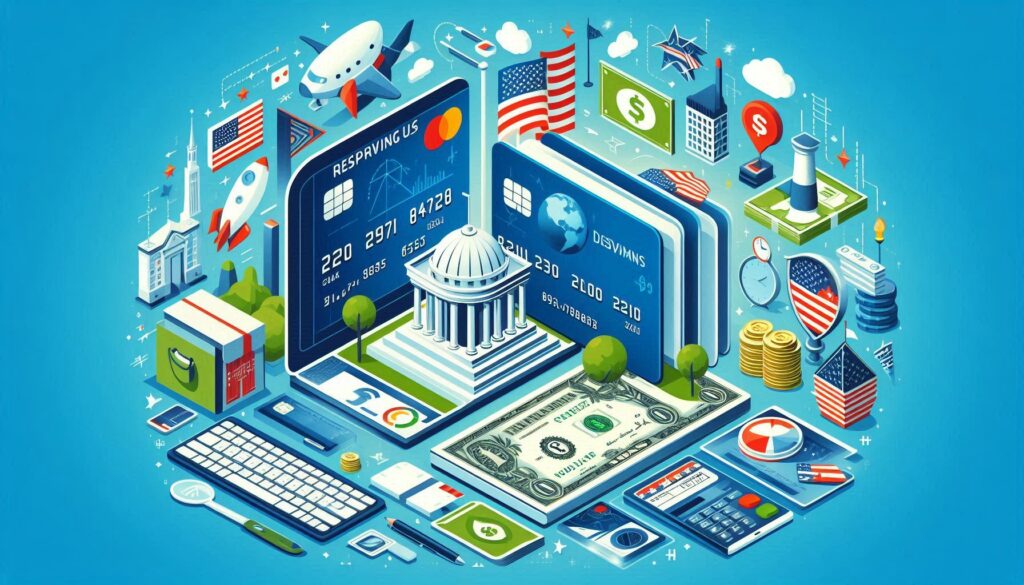How credit card rewards programs in the US are transforming in 2025: What cardholders need to know
Credit card rewards in the US are undergoing major changes in 2025, with issuers rethinking how to keep customers engaged. As spending habits shift and competition grows, programs are becoming more personalized and valuable.
Understanding these new trends is key for anyone looking to maximize their benefits. Whether you’re a frequent traveler or cashback enthusiast, the latest updates are designed to meet your lifestyle needs. These transformations mean greater flexibility and more options tailored to individual preferences.
The evolution of credit card rewards in 2025

Reward programs in the US have always been about giving back value to cardholders, but 2025 is setting a new standard. Instead of offering generic points, issuers are delivering tailored experiences based on user preferences.
Banks are leveraging advanced data insights to analyze spending patterns and create more relevant rewards. This year, flexibility is at the core of nearly every program.
Rather than limiting customers to airline miles or hotel stays, many cards now let users redeem rewards for digital subscriptions, eco-friendly purchases, and even cryptocurrency. The goal is to provide options that fit modern life while staying competitive in a crowded market.
These adjustments aren’t just about choice. By focusing on customization, card issuers are building stronger loyalty and reducing the chance of customers switching to rivals. As fintech innovation accelerates, personalization will continue to shape the future of credit card benefits.
Why flexibility matters in 2025
In the past, many credit card rewards were rigid, forcing customers into specific redemption options that didn’t always match their needs. This approach led to frustration, particularly for those who preferred practical rewards like statement credits over travel perks.
Now, issuers understand that one-size-fits-all solutions no longer work. Consumers demand control over their rewards, leading to programs that allow for partial redemptions, split payments, and dynamic conversions. The more flexible the rewards system, the more attractive the card becomes to long-term users.
How major issuers are reinventing their rewards
In 2025, leading credit card companies like Chase, American Express, and Capital One are revamping their offerings to keep pace with evolving consumer demands. Each brand is now focusing on key areas where their customers see the most value.
Exclusive partnerships and lifestyle benefits
Chase has expanded its popular Ultimate Rewards platform by partnering with wellness brands, streaming services, and tech companies. Cardholders can now earn extra points when subscribing to premium fitness apps or purchasing the latest gadgets.
American Express has taken a different route, prioritizing exclusive event access. From private concerts to culinary experiences, members can redeem points for unforgettable moments. These kinds of perks tap into the growing desire for meaningful, real-world rewards that go beyond discounts.
Capital One is enhancing its travel ecosystem with luxury perks at boutique hotels and priority booking on sold-out flights. At the same time, they’re investing in sustainable travel initiatives, allowing customers to support carbon offset programs through their points.
What ties these strategies together is the focus on curated rewards that reflect lifestyle trends. In 2025, it’s no longer enough for a credit card to offer simple cashback. Today’s top programs blend convenience, status, and purpose in a way that keeps customers invested.
How technology is driving smarter rewards
Artificial intelligence is playing a bigger role in the way rewards are distributed and suggested. Algorithms track spending in real-time, identifying opportunities to surprise cardholders with bonus points or targeted offers.
For example, if someone frequently dines at local restaurants, their card may automatically present limited-time boosts for similar purchases. This creates a seamless experience where the card adapts to the user without requiring constant manual adjustments.
AI is also improving fraud detection while managing rewards, ensuring that bonus points are only awarded for legitimate transactions. With real-time analysis, the system can detect anomalies, protect accounts, and still deliver timely incentives.
These technological advancements are not just backend improvements. They directly impact how customers experience their credit card benefits every day, making rewards feel more personal and secure. The ability to receive real-time insights and recommendations means that users can maximize their points without extra effort.
Balancing value with sustainability
In 2025, credit card rewards aren’t just about personal gain anymore. Environmental responsibility has become a major focus, with many issuers integrating eco-conscious options into their programs.
Customers are now able to redeem points to support green projects, donate to environmental charities, or purchase sustainable products. This shift reflects a broader cultural movement where people want their financial choices to align with their values.
At the same time, cards that promote carbon-neutral operations are gaining traction. Issuers are partnering with environmental groups to ensure that points programs contribute to offsetting emissions generated from flights, shipping, and daily spending.
Eco-friendly perks gaining popularity
Some issuers now reward users for sustainable behaviors, such as using public transportation or shopping from eco-friendly brands. Points multipliers on purchases that promote sustainability are becoming a major trend, allowing customers to feel good about how they earn rewards.
Additionally, certain credit cards are offering incentives for electric vehicle (EV) charging station payments, further supporting the transition toward greener transportation. As consumer demand for sustainability grows, banks are finding new ways to integrate environmental considerations into their programs.
The future of loyalty in a changing economy
The economic landscape is also influencing how rewards evolve. With inflation and shifting employment patterns, cardholders are prioritizing programs that provide real savings on essentials like groceries, fuel, and utility bills.
Targeted cashback for everyday spending
Some issuers have redesigned their cashback categories to focus on necessities. In 2025, cards that offer bonus percentages on supermarket runs, home maintenance services, and health-related purchases are seeing increased popularity.
By adapting to these realities, credit card companies are strengthening customer retention. People are more likely to stick with a card that helps lower their cost of living while still offering the occasional luxury.
Why adaptability is key moving forward
The days of one-size-fits-all credit card rewards are behind us. Flexibility and adaptation are now essential, with programs needing to evolve alongside consumer behavior. Looking ahead, we can expect more hybrid models that combine traditional perks with on-demand features.
For instance, seasonal rewards that adjust based on holidays or local events, or temporary bonuses tied to regional spending trends. These innovations will make loyalty programs feel more dynamic and responsive.
Ultimately, the success of any rewards program in 2025 and beyond depends on how well it can anticipate and respond to the needs of its audience. Whether through exclusive experiences, sustainability options, or practical cashback, the future is all about delivering meaningful value.
Graduated and master's student in History. Fanatic of books and series. Editor since 2023.




